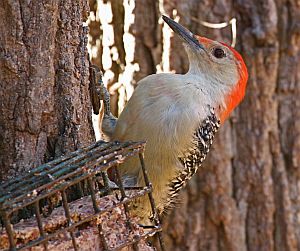 The second Pennsylvania Breeding Bird Atlas is drawing to a close and the final data analysis is about to begin. I think we’ll learn a lot from the results if New York’s Breeding Bird Atlas is any guide.
The second Pennsylvania Breeding Bird Atlas is drawing to a close and the final data analysis is about to begin. I think we’ll learn a lot from the results if New York’s Breeding Bird Atlas is any guide.
From 2004 through 2008 Pennsylvania birders roamed the state looking for birds who were claiming territory, building nests, incubating eggs or feeding young. We did our best to cover every nook and cranny, recording the breeding evidence of species we found in each 9-square-mile block. With over 4,900 blocks in the state, it was a big job.
The first Pennsylvania BBA was conducted from 1984 through 1988 so one outcome of the second atlas project will be a comparison of breeding ranges and species over the past twenty years. If we want a hint at the results we can look to New York whose breeding bird atlas was completed three years ahead of ours.
Like Pennsylvania, New York conducted two atlas surveys twenty years apart. When SUNY College of Environmental Science and Forestry (ESF) compared the two data sets they discovered that the ranges of many species have changed significantly in only two decades. The birds have moved northward.
Southern birds, like the red-bellied woodpecker pictured here, have moved further into New York while northern birds, like the pine siskin, no longer breed in parts of New York because their southern range boundary has shifted into Canada.
Interestingly, the northern birds are receding faster into Canada than the southern ones are proceeding into New York. This pattern, added to earlier spring migration arrival, points to climate change as a possible cause.
Will we notice this in Pennsylvania too? Stay tuned.
(photo by Chuck Tague)